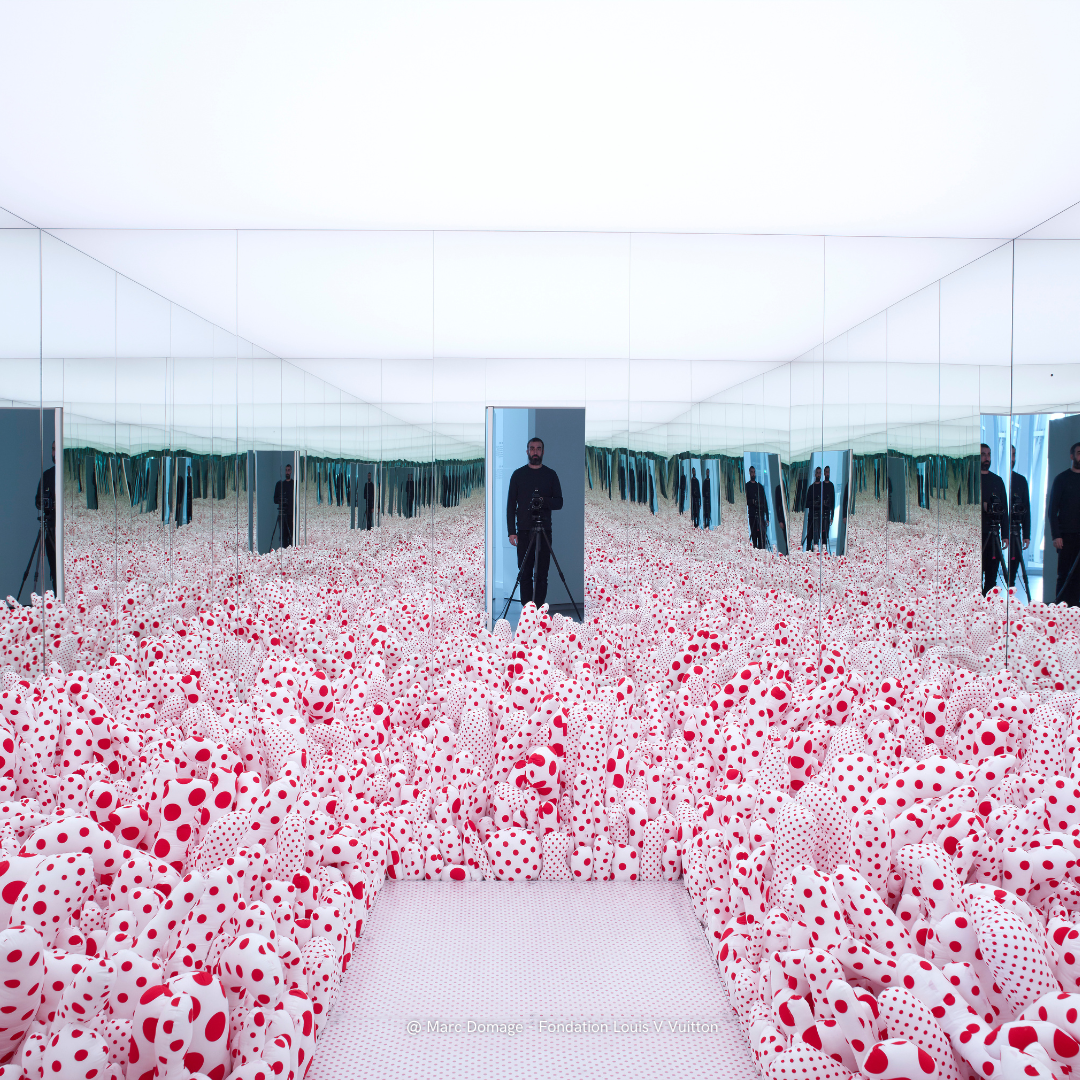“To share the emotions and questions provoked by certain works whose power to “break the rules” reinvents a relationship with the world”: this is the guiding principle of the Louis Vuitton Foundation Collection created in 2006 by Bernard Arnault, a principle with which we identify. This is why we have decided to focus each month on an iconic work from the collection, which now includes 330 contemporary works (created since the 1960s) by 120 international artists.


Organised “around sensitive lines that draw four directions: Contemplative, Popist, Expressionist, Music and Sound”, “the collection does not want to ignore the history in which it is embedded, nor the diversity of media, languages and expressions”.
At the crossroads of these paths and at the forefront of the avant-garde and the revolution in languages and media at the time of its creation in New York in 1965, the iconic work we have chosen to begin this series, the Infinity Mirror Room by the Japanese artist Yayoi Kusama, is thus emblematic of the collection, but also of the entire work of this high priestess of immersive art and happening, a veritable living legend of the sixties.
The first in a series of kaleidoscopic environments, this work consists of an enclosed space, accessible through a single door, lined with mirrors and littered with phallic tubers made of white fabric with red polka dots – the proliferating polka dots that have become the trademark of the eccentric artist. A phallus field (Phalli’s field is the second title of the work) reflected to infinity… Immersed in this hallucinatory “landscape-painting”, “the spectator is caught up in an intense multi-sensory immersive experience”, causing the poisonous tubers to collide with his own reflection in a chaotic proliferation: a vertiginous mise en abyme of the viewer immersed in his infinite, elusive reflections. From infinite space to perpetual erasure, the work is doubly deceptive.


It is also deceptive as to its meaning if one ignores that phalluses and mirrors are representations of the divine in Japan, and that the artist, suffering from an obsessive mental illness and prone to hallucinations (of proliferating forms) since a traumatic childhood, gives her artistic practice a cathartic purpose, a power of conjuration.
A pioneer – and therefore cheerfully copied and plundered (by Andy Warhol, who imitated her proliferation of motifs; by Claes Oldenburg, who was inspired by her furniture bristling with hand-sewn protuberances… ), Kusama was radical and provocative from her early years in New York (where she settled in 1958, at the age of 29), notably through her use of nudity in her hippie body festivals and other naked performances, through her voyeuristic devices with erotic overtones, and through the use of her body to activate space. From his immersive and proliferating spaces to his aggregations of invasive organic forms and other accumulative sculptures, the contribution of his avant-garde work, which has long remained in the shadows, has been considerable, and it can be said that it is at the origin of some of the key works of the second half of the 20th century.
Yet it was probably due to a lack of recognition that she returned to her native Japan fifteen years after leaving it. Voluntarily interned in a Tokyo psychiatric hospital since 1977, she continues today, at the age of 93, from the studio that has been set up for her, to spread her peas to ward off, again and again, the hallucinatory obsessions that invade her.
Is this an attempt to erase himself within the multiple? A quest to dissolve the body in the immeasurable infinite? Anguish or desire for disappearance (Kusama is the author of a Manifesto of Obliteration)? “Alone in the pink boat, I am trying to navigate the sea of death […]”, the artist declared in 1998 to another star of contemporary art, Damien Hirst. A snippet of a sentence that says a lot about this pop and tragic epic.
Stéphanie Dulout
